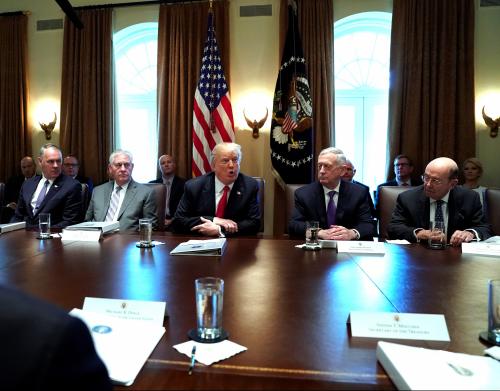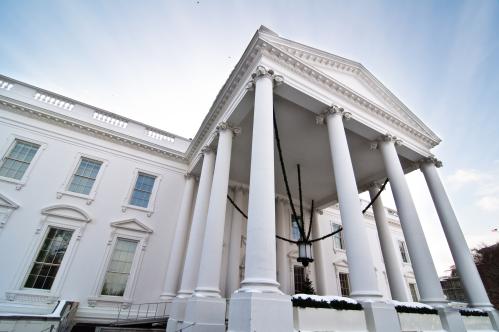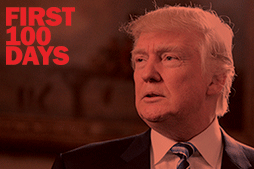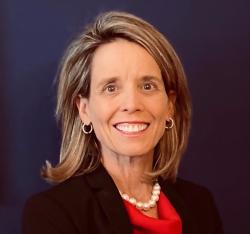Kirstjen Nielsen, the secretary of Homeland Security, submitted her resignation letter on Sunday, April 7, 2019, marking the 15th Cabinet-level departure in the Trump administration since January 2017. By contrast, President Obama had seven departures after three full years in office, and President George W. Bush had four departures after three full years. Cabinet turnover in the Trump administration has been and continues to be unprecedented compared to his five predecessors.
Nielsen’s departure also marks the first Cabinet position (in the line presidential succession) to turnover twice. Data going back to Ronald Reagan indicate that this is another first for the Trump administration: None of the past five presidents has appointed three departmental secretaries (to the same department) within the first 27 months of their administration.
Not surprisingly, this trend of exceedingly high cabinet turnover is also present in an analysis of the most senior White House advisers—currently 66% of President Trump’s “A-Team” have departed or been promoted—a rate of turnover that far exceeds presidents going back to Reagan. Newsworthy staff turnover has been a constant in this administration, beginning with National Security Adviser Michael Flynn’s sudden departure less than four weeks after inauguration. Ever since, there has been a steady stream of high-level departures often accompanied by critical presidential tweets and harsh responses from former staff. The consequences of such turnover are many, and fundamentally impede the president’s ability to fulfill his campaign promises.
Compounding the frequent departures of senior leadership are the existing vacancies that have yet to be filled. At this point, the Trump Cabinet has an acting chief of staff, acting Defense secretary, acting Interior secretary, acting director of the Office of Management and Budget, and now an acting secretary of Homeland Security. Of these “actings,” only acting Interior Secretary David Bernhardt has been nominated to assume the role on a permanent basis. In addition, many Senate-confirmed positions across the executive branch have remained vacant since inauguration. The Partnership for Public Service, which monitors federal vacancies, indicates that 140 Senate-confirmed positions have no nominee after 27 months in office. Put differently, the White House has original vacancies on top of recent vacancies—working in the Office of Presidential Personnel must be like drinking water from a fire hose.
A pattern in second-round picks?
One unique feature of recent cabinet turnover has been the Trump administration’s tendency to select successors with prior substantive expertise: Health and Human Services Secretary Alex Azar worked in that department during the George W. Bush administration; Attorney General Bill Barr served in the same job during the George H.W. Bush administration; the second Veterans Affairs secretary, Robert Wilkie, served in a Senate-confirmed position at the Defense Department; EPA Administrator Andrew Wheeler worked there for President George H.W. Bush; and Interior nominee Bernhardt worked for that agency throughout President George W. Bush’s administration. (The one noteworthy exception to this practice was CIA Director Mike Pompeo and his move to the State Department. His prior career was in business and politics as the U.S. Representative from the 4th District in Kansas.) If Cabinet turnover leads to successors with more substantive experience, that will likely benefit the Trump administration in its pursuit of policy goals.
President Trump’s first set of cabinet appointments was largely drawn from former and current politicians like Scott Pruitt, Jeff Sessions, Tom Price, Rick Perry, Ryan Zinke and Sonny Perdue, but this practice appears to be giving way to an approach that values specific substantive experience. With the 2016 campaign decidedly in the rearview mirror and declining pressure from campaign fundraisers and staffers (who may have wanted jobs in the early days of the administration), the Trump team seems to have adopted a new approach. At this point, however, it is too soon to know whether prior experience will lead to longer tenures. It makes sense that familiarity with the department coupled with substantive expertise might result in a savvy Cabinet secretary with better survival skills. But the president has played a key role in this elevated turnover, suggesting that all Trump appointees best keep their resume updated.






Commentary
Kirstjen Nielsen, secretary of Homeland Security, out amidst national emergency
April 9, 2019